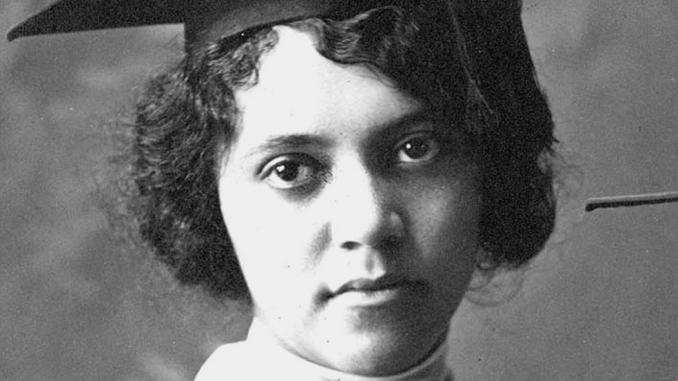
Alice Augusta Ball: The Woman Who Cured Leprosy
So few know the name, Alice Augusta Ball or her accomplishments, because initially another man took credit for her work. But Alice Augusta Ball is a black woman and is now known for significantly contributing to medical discoveries and firsts for women. This is her story…
Leprosy or Hansen’s Disease

One of the most virulent plagues known to mankind is Leprosy, also called Hansen’s Disease. Because the disease was highly contagious, painful and disfiguring, and known to cause certain death, patients with Leprosy were immediately forced into quarantine far from others. Patients experienced slow, miserable deaths due to this disease with little to comfort them.
The Accomplishment
But, today, leprosy is eliminated from our world, per the World Health Organization (as of 2000). In America, it was also no longer equated to death by the early 1920’s, because of Alice Augusta Ball. Incredibly, she developed a cure for Leprosy at the age of 21. She died shortly after her discoveries and another man published her work and took full credit. Eventually, historic records led to correcting this deception.

Alice Augusta Ball
Alice Augusta Ball was born on July 24, 1892 in Seattle, Washington to her parents, James Presley and Laura (Howard) Ball. Ball was one of four children. She had two older brothers and a younger sister. Ball’s father was a newspaper editor and a lawyer and her mother was a photographer. Her grandfather, James Ball Sr., was a famous photographer and among the first in the United States to learn to daguerreotype, a process of printing photographs onto metal plates.
Ball’s family moved to Honolulu from Seattle, when she was a child. The family hoped the better weather might help her grandfather’s difficulties with arthritis. Following her grandfather’s death, her family moved back to Seattle, where she received top grades at her local high school and graduated in 1910. Alice then attended the University of Washington, initially receiving a bachelor’s degree in pharmaceutical chemistry and then a second degree in pharmacy two years later.
A Significant Publication
Of significant note is both she and her pharmacy instructor, together, published a ten-page article in the highly regarded “Journal of the American Chemical Society” titled “Benzoylations in Ether Solution”. This accomplishment was not only rare for an African American woman, but for any woman.
Following graduation, Ball received several scholarship offers to continue her studies. She chose to return to Hawaii and the University of Hawaii to pursue her master’s degree in chemistry. While pursuing her studies, she did research work and also taught at the university. In her postgraduate research career at the University of Hawaii, Ball investigated the chemical makeup and active principle of Piper methysticum (kava) for her master’s thesis.
Her Work to Cure Leprosy Began

While working on her thesis, Ball was asked by Dr. Harry T. Hollmann, an assistant surgeon at Kalihi Hospital in Hawaii, to help him develop a method to isolate the active chemical compounds in chaulmoogra oil. Hollmann believed there had to be a way to make chaulmoogra oil compatible with the human body.
Chaulmoogra oil had previously been used in the treatment of Hansen’s Disease (Leprosy) with mixed results. While the oil had shown some promise in treating Leprosy, it had not been completely effective, as it proved to be incompatible with human chemistry. Most patients with Hansen’s Disease were hesitant to take the oil over the long term, because it tasted bitter and caused vomiting, when ingested, and was painful and caused disfiguring rashes with injections.
The Breakthrough
Through her research and hard work, Ball developed a process to isolate the ethyl esters of the fatty acids in the chaulmoogra oil. This made the oil water soluble so it could safely be injected into patients. But, Ball died before she could publish her results.
A Stolen Achievement
Another chemist at the University of Hawaii, Arthur L. Dean, took over her studies, published them as his own, despite the objections of Dr. Hollmann. Dean then began producing large quantities of the injectable chaulmoogra extract and the treatment was called the “Dean Method”. Credit for the discovery was stolen from her, until Dr. Hollman reclaimed it again in a publication in 1922. But, with the initial attention for the treatment no longer being new, her name was again forgotten.
The “Ball Method”
The “Ball Method” was so successful, leprosy patients were discharged from hospitals and facilities across the globe including from Kalaupapa, an isolation facility on the north shore of Molokai, Hawaii where thousands of people suffering from leprosy died in years prior.
In 1918, a Hawaii physician reported in the Journal of the American Medical Association that a total of 78 patients were released from Kalihi Hospital by the board of health examiners after treatment with the “Ball Method” injections. The isolated ethyl ester remained the preferred treatment for Hansen’s disease until sulfone drugs were developed in the 1940s.
A Debt of Gratitude Owed
Thanks to Alice, these banished individuals could now return to their families, free from the symptoms of leprosy. Alice Ball’s work directly impacted the thousands of people that were diagnosed with leprosy and taken out of their homes. Because of her research patients were no longer exiled to Klaipeda, Molokai; instead they were able to be treated out of their own homes. Families no longer had to hold funerals for their loved ones before they were exiled because there was no cure. They had Alice Ball to thank for this.
A Brilliant Life Cut Short

Alice Augusta Ball died on December 31, 1916, at the age of 24. She had become ill during her research and returned to Seattle for treatment a few months before her death. A 1917 newspaper article from the Pacific Commercial Advertiser suggested that the cause may have been chlorine poisoning that occurred during a lab experiment, while she was teaching. However, the cause of her death remains unknown as her original death certificate was altered, giving the cause of death as tuberculosis.
Amazing Accomplishments
Alice Ball was also the first woman and first African American to graduate from the University of Hawaii with a master’s degree. And, though her success seemed to have been forgotten, archivists and librarians at the University of Hawaii sought out her work in their school’s archives. Paul Wermager, one of those researchers, assisted filmmakers with a short film about Ball’s life and work, The Ball Method. It premiered in February 2020 at the 28th Annual Pan African Film Festival.
Ongoing Recognition

In 2000, the University of Hawaii-Mānoa placed a bronze plaque in front of a chaulmoogra tree on campus to honor Ball’s life and her important discovery. The University of Hawaii-Mānoa, established The Alice Augusta Ball endowed scholarship to support students in the College of Natural Sciences pursuing a degree in chemistry, biology or microbiology in 2017.
The State of Hawaii, declared February 29 “Alice Ball Day” in 2000, which is now celebrated every four years.
Information about the film about Alice Augusta Ball: https://massivesci.com/articles/alice-ball-method-dag-abebe-museum-moving-image-kiersey-clemons/
For the story of another unsung hero from America’s history by this author, see this article on The Founding Project’s website: https://thefoundingproject.com/unsung-hero-revolutionary-war-james-armistead/

Sources:
https: //daily.jstor.org/the-chemist-whose-work-was-stolen-from-her/……https://scientificwomen.net/women/ball-alice-121……https://www.biography.com/scientist/alice-ball……https://medium.com/s/the-matilda-effect/alice-ball-matilda-effect-6b5fb64c74d6……https://www.biography.com/scientist/alice-ball……https://www.nationalgeographic.com/news/2018/02/alice-ball-leprosy-hansens-disease-hawaii-womens-history-science/…..https://manoa.hawaii.edu/library/about/organization/artwork/alice-augusta-ball-1892-1916/


Leave a Reply